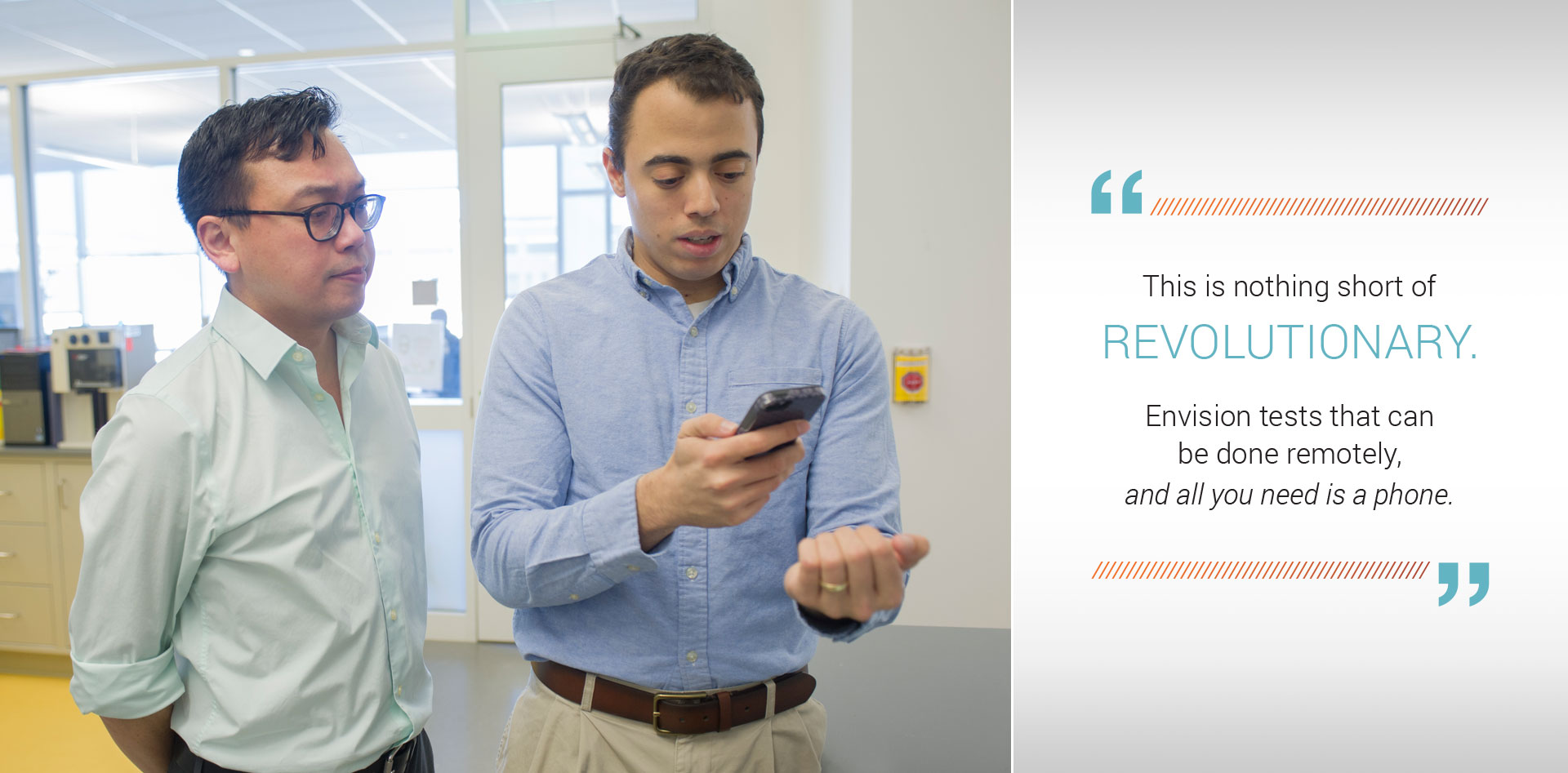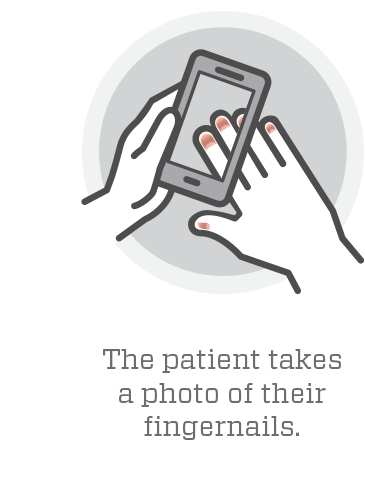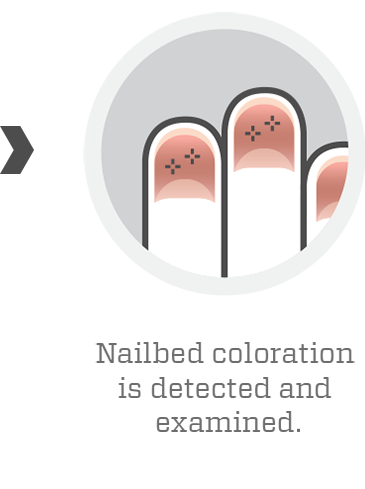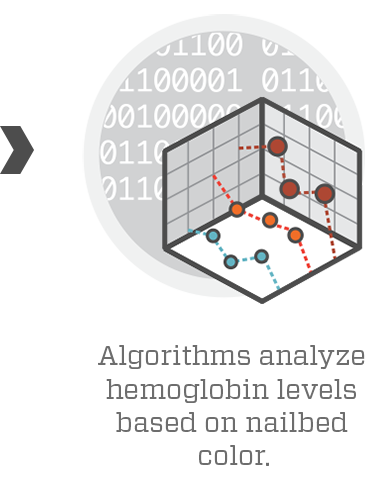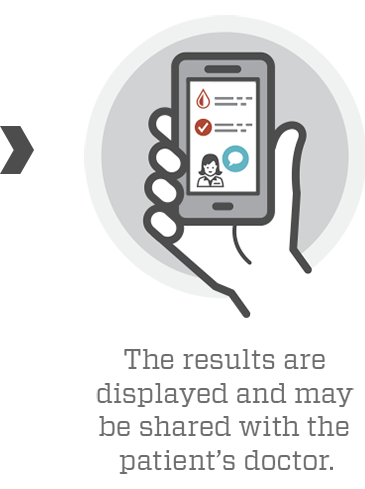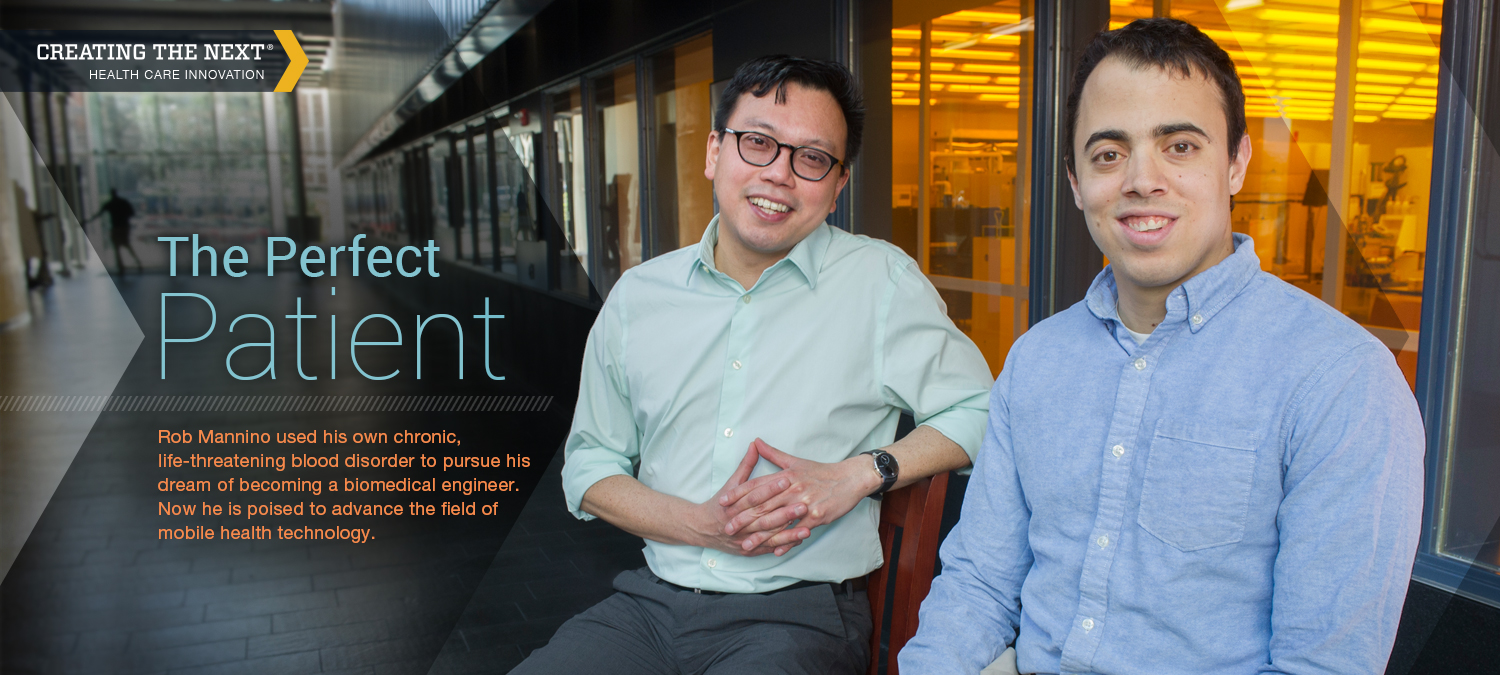
The Perfect Patient
Rob Mannino used his own chronic, life-threatening blood disorder to pursue his dream of becoming a biomedical engineer. Now he is poised to advance the field of mobile health technology.
Updated March 7, 2019 to add links to recent news about this research.
“I was always curious about my disease,” he explains. “I always wanted to study it.”
Six years ago, as a sophomore at Georgia Tech, Mannino was able to begin studying it: A blood disease called beta thalassemia.
His hematologist at Children’s Healthcare of Atlanta introduced him to a fellow physician on staff who also happened to be an assistant professor in the Wallace H. Coulter Department of Biomedical Engineering.
Meeting a Perfect Mentor

Anemia
A reduction in the number of red blood cells, or a decreased capacity of red blood cells to
carry oxygen.
Beta thalassemia
A genetically inherited form of anemia in which the beta globin protein, a main
component of hemoglobin, is not adequately synthesized by the body.

At that time, he had been going to Children’s every month for almost two decades to undergo grueling blood transfusions — the only therapeutic treatment for beta thalassemia.
This genetic disorder causes a reduction of hemoglobin, which is the red blood cell protein that delivers oxygen throughout the body, and it causes chronic anemia. He was diagnosed at six months old.
Meeting Wilbur Lam changed everything. Mannino began doing research in the Lam lab, and at the same time he inspired his new mentor to develop HealthReach, a program in the Coulter Department that brings undergraduates to Children’s to help pediatric patients learn about science and math by understanding their own diseases.
Lam describes it as “a perfect mix. You have undergraduates applying their engineering skills to patients, and then you have patients who now have a new way to discover that there is science going on in their own bodies.”
Developing a Hypothesis
Mannino’s curiosity, and his passion for biomedical engineering, did not end with his graduation in 2013. He continued on as a graduate student in Lam’s lab, pursuing technological innovation in diagnostic tools as well as a Ph.D.
Along the way, he began to develop a hypothesis about smartphone technology and an application that could possibly help patients to test their own hemoglobin levels by taking a picture of their fingernails.
He came up with the idea to photograph fingernails with a smartphone and compare them to the hemoglobin measured from blood draws. Still in the early stages of testing, the application of the algorithm in a mobile device will have to go through multiple clinical studies and be approved by the Food and Drug Administration before it is actually implemented.
UPDATE Dec. 10, 2018:
The researchers have published the results of their study in Nature Communications and
announced that the smartphone app will be available commercially for public download in
Spring 2019.
Read: No
Bleeding Required: Anemia Detection Via Smartphone
“This is nothing short of revolutionary,” says Lam. “Envision tests that can be done remotely, and all you need is a phone. The capability to diagnose remotely, the capability to not require any other external equipment — that is really the potential of Rob’s work.
Because he was his own test subject in the very beginning to prove that his system worked, he enabled our entire laboratory to move in a new direction. He is the perfect patient.”
Lam is part of a startup company that seeks to commercialize technologies emerging from his lab. Someday, Mannino hopes to join the company, and they both hope that this app will reach the marketplace. If successful, they will consider pursuing the application of the technology to other disorders.
Lam and his team have already helped to advance smartphone technology that can check children’s ears for signs of infection. And researchers at the Georgia Tech Research Institute have developed an app that may enable people with Parkinson’s disease and other neurological conditions to collect data on hand and arm tremors.
Mobile Anemia Diagnosis

Rob Mannino is developing an app to indicate hemoglobin levels
Today, the only cure for beta thalassemia is a bone marrow transplant, but for Mannino it is not an option.
Gene therapy holds perhaps the greatest promise for one, but for now the most effective treatment option remains regular transfusions.
He wants to make things easier for those with anemia and others suffering from diseases like his — people who have to make regular trips to the hospital, which can be a major inconvenience and expense, and which involve a generally unwelcome needle stick.
If this technology becomes commercialized, they would be able to download the app, monitor themselves at home, and send photographs to their doctors.
Mannino is unflappably optimistic when he reflects on his lifelong health challenges and the journey they have inspired — a journey that was shaped in many ways by Georgia Tech’s, and the Coulter Department’s, collaborations with Children’s Healthcare of Atlanta and Emory University.
“You can’t change what you’re dealing with, so use it to your advantage,” he explains. “Dealing with this disease, besides giving me motivation, has opened doors for me to do what I want to do.”

